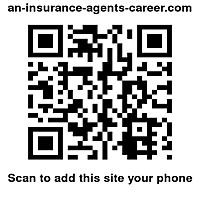- Home Page
- 5 - Pre-Interview Fact Finding.
- 4 steps of the sales cycle
Insurance Sales Training
The sales cycle
Every article on this website is like a mini-training school. use the nav bars on either side of this page to locate your area of interest or subject you need help with.
Lets Discuss The Four Parts of The Life
Insurance Sales Cycle
Insurance sales training, do it right. Sometimes we get off track from the life insurance basics we were
taught during our initial sales training, and this impacts our
ability to run a quality interview.
Keep in mind a sale is made during every interview: You either sell them, or they are going to sell you.
The actual interview consists of four distinct steps, which is called the sales cycle.
Do you have a systematic sales cycle?
What is the sales cycle?
I see it as an orderly and defined way, during an interview whereby you get a prospect to agree with you about certain wants and needs. When agreed upon, they will then want you to provide a solution to make sure those wants and needs are taken care of, by using the products that you sell. In our case: Life insurance.
(Remember people buy what they WANT, not what they need.) They need life insurance, but if they want a new boat. Guess who wins! That is why you need to be ready and have a quality and systematic presentation.
Moving on....
First off, your insurance sales training coach should have taught you how to do a warm up session when you first sit down in front of a new prospect. (10-12 minutes)
This is where you sit down and just chit chat and get to know each other. You are looking for a common bond to create a relationship with the prospect. A common bond would be like fishing, golfing, model railroading, etc. Once that bond is established you can make your transition into your questionnaire.
Transition Phrase:
Mr. Prospect, when we talked on the phone the other day, I indicated I had some ideas I wanted to share with you about (whatever you called on)
What I would like to do now is gather some information from you to see if we really have anything to help you and your family.
Move into the opening questions, on the Confidential Questionnaire starting with their name.
Lets examine the 4 steps that make up the sales cycle.
Step 1. Client Interview Questionnaire - This is what I call the interrogation process, digging into the prospect's mind, discovering what they want, developing a rapport. Here is where you sell you, by learning to listen and ask key questions. Once you know what they want to accomplish, then this can become the theme of your presentation.
Step 2. The actual Sales Presentation - Showing benefits and features to help the prospect take care of their wants and needs.
Step 3. The Close - Sell them what they want, make them a client.
Step 4. The second sale – Which is where you ask for referred leads upon completion of your interview.(This will be discussed in a separate topic page.
I am sure that there are many variations of a sales cycle. However, I am going to share with you how our life insurance marketing team approached it. This concept is based on a proven format that has helped many life insurance agents during their early years and their ongoing insurance sales training program, become more successful in the life insurance business.
In your companies life insurance sales training program you will be taught how to run an interview using the following concepts.
Some companies UTILIZE a two-interview concept. This is more of a total financial planning sale. The first interview is a fact finder and the second return interview presents the proposal to the client - the agent attempts to close the sale by going through the closing process.
Other companies UTILIZE a target-marketing, one-time sales presentation, for example, Medicare, mortgage insurance, disability income, etc.
In either case, you still need to go through each step of the sales cycle in an orderly fashion to uncover what the prospect wants to do relating to their financial life.
This insurance sales training topic page will try to clarify why the client interview questionnaire, which we call the confidential questionnaire, is so important.
Your company may have a interview questionnaire they like to use. However, I am going to provide you with an overview and outline of the one developed by our sales team.
You may want to use this questionnaire, a variation of it, or just add some of these questions to what you are currently doing. If nothing more, I want to emphasize how and why each of the questions on this questionnaire have a specific and defined purpose.
Click here for Free Insurance Industry Resources
then click on the financial services link and the insurance link
Here is the biggest closing mistake that most improperly
trained insurance agents make.
They transition into the sales presentation to early.
Rule Number one, you should, never under any circumstances, move into the actual sales presentation until you are sure you have uncovered a want or need, that the prospect wants taken care of, and you have qualified them money wise.
In other words, you need a meeting of the minds to move forward. Do they have the money to do something, and would they be willing to make a money commitment. If not, then why would you waste your time going through the presentation. Timing is everything.
Again, I want to re-emphasize, the biggest mistake manyLife insurance agents make, is that they gloss over the client interview questionnaire, and jump right into the presentation on the hope that the prospect will get excited about the product and buy it . ...You couldn't be more mistaken!
It is paramount that during your insurance sales training sessions that you learn that the sales cycle needs to be presented in a logical step-by-step process.
Click here to go to the
second part
of this insurance sales training topic, and learn how the closing pyramid concept will increase your life insurance closing ratio.
Learn and Earn
| Monthly Newsletter Free Please add me to your e-mail list so I can receive all new updates on selling and recruiting. See all back issues |
| Insurance Forum Get answers |
Follow Us
|
Our most popular Self Help e-books Exclusive to our readers |
Looking for proven and tested recruiting concepts. View our Agency Building Manual. |
| More free resources and helpful selling tools |


